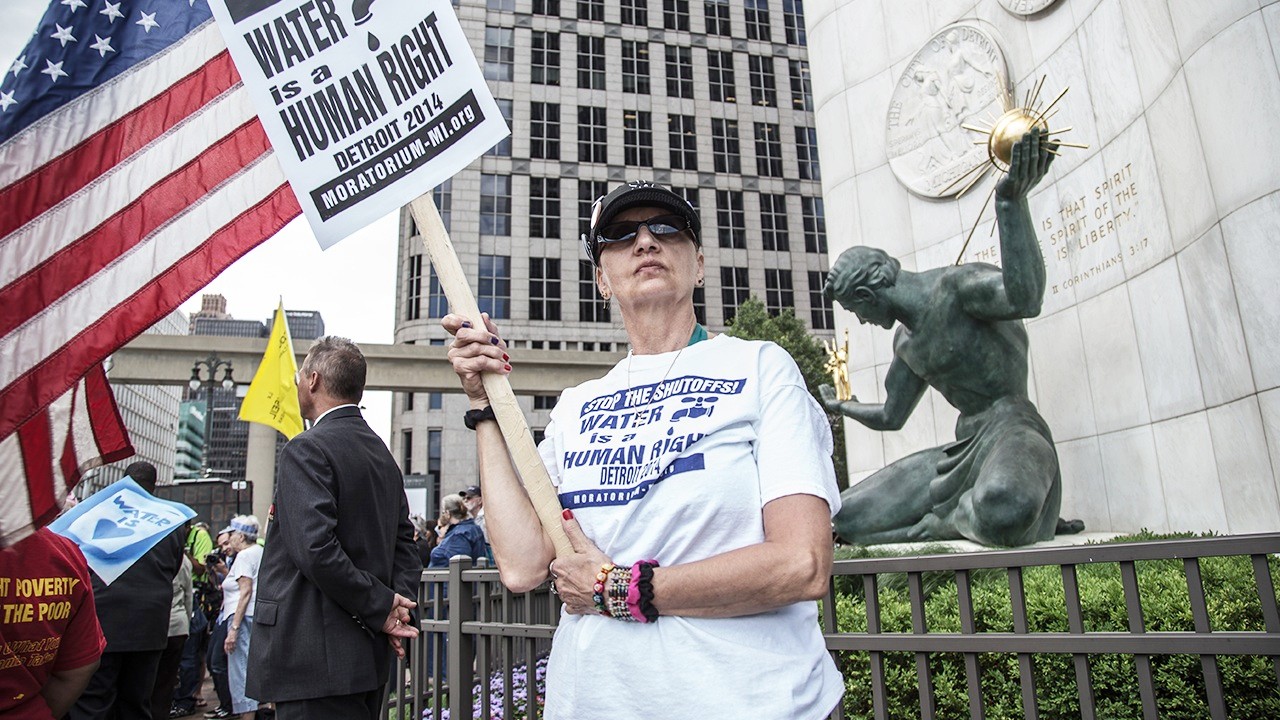The toxic water crisis in Flint, Michigan brought national attention to the serious problem of water security.It takes a lot to ensure that water is safe before it comes out the faucet. The EPA's Urban Water Partnership showcases how cities are repairing their local bodies of water to their former glory. Here's our toast to the communities that are bringing something fresh to water to ensure another Flint doesn't happen again.This gigantic river basin watershed is one of the largest in the world. The EPA describes it as the cornerstone for urban development, agriculture, transportation, recreation, fisheries and hydropower in its region.The EPA, along with localNative American tribesandnon-profit organizations, have banded together to form the Columbia River Toxics Reduction Working Group. The group works to share information and develop strategies to reduce toxins in the basin that led to habitat degradation and contaminated water in the pastby educating residents. For instance, reminding people not flush unused or unwanted medicine and purchasing from environment friendly brands. Othersuccesses,have been from improved farming trends such as proper disposal of pesticides.
Check out some more video from VICE:
Stretching approximately 8,000 square miles across the southwest region of the country, the watershed is big a deal for the state of Arizona -- especially in Tucson, the state's second-largest city. Unfortunately, the watershed has been polluted by ammonia, chlorine, metals and various toxins.All hope is not lost, though. Non-profit partners such asFriends of the Santa Cruz Riverand theTucson Audubon Societyare pitching in withstate organizationsto repair the watershed. They've made strides in plumbing infrastructure to get their water back on track.The community in Albuquerque has put in a lot of work toward fixing the damage done to their water supply from bacteria and arsenic . They've taken action by implementing bacteria reduction programs and switching to surface water for their main source of drinking water.The EPA has listed several of thecity's accomplishments,such as a storm water quality project that reduces trash from entering the Rio Grande. Also, local organizations are helping with the restoration process by improving access to urban waters and surrounding waterways.Denver city-dwellers mainly use the South Platte River for outdoorsy activities, but the water's status hasn't always been fun and games. In 2010, it landed on Colorado's list of impaired water bodies forE. coli, arsenic, and cadmium. That is so not chill.Things haven't gone down the drain just yet. The EPA creditsThe Denver South Platte River Commissionandthe Greenway Foundationfor spearheading the cleanup, redevelopment, parks, and recreational opportunities along the River.The Blue River watershed is huge, like 270 square miles huge. Including its tributaries it spans across areas in both Kansas and Missouri. It's a model for aclean water initiativebecause of its green infrastructure, conservation projects and educational programming. TheEPA saysthat a major win came from the Regional' Office's Environmental Justice (EJ) program's partnership with Green Impact Zone of Missouri (GIZMO). Together EJ and GIZMO efforts have gone towards sustainable neighborhood repair and creation of green jobs, which has the helped the community clean up their act.These Midwest cities are starting renewal programs to reduce contaminants in their streams and rivers. Milwaukee is started creating rain gardens to be green infrastructure that rivers and lakes from stormwater runoff pollution.Also, in Cincinnati, the city may have new way for dealing with sewage in the near future. The powers that be in the sewer district want to implement a project that takes stormwaterout of the combined sewer system. Their pipeline projects have the potential to revitalize transportation, outdoor play, and overall community development.Turkey Creek has a longstanding history of uniting members of its community. In 1866, freed slaves would use the creek for drinking water and baptisms in religious ceremonies. Now, after decades of outside pollution, people are collaborating on a project to clean the creek.In 2004, the EPA funneled $150,000 into the surrounding area as a Clean Water Act grant which benefits residents living near the creek. In 2010, a local land trust that oversees the creek received a $400,000 grant from the Mississippi Department of Equality. With a ton of money flowing through the proper channels, the creek is now well on its way to recovery.The status of the Anacostia River is a public health concern. As it stands, the river and its tributaries are constantly polluted by a huge amount of runoff as well as trash and sediment. But on the bright side, a restoration plan has been put in place which includes regulations overseen by the EPA, in partnership with local NGOs to clean up the trash and gross stuff.The Mystic River was the inspiration for the nursery rhyme "Over the River and through the Wood," but it's far from its once magical status due to a combination of industrialization and neglect. Thanks, Boston.However, the cleanup process has come a long way in bringing it back to its fanciful nursery rhyme beauty. In 2008, there was a River Watershed Summit that tackled the painful realities of pollution, flooding, and bacteria that basically straight up ruined the Mystic River. EPA regulations have also stopped more than 10,00 gallons of sewage per day from being illegally dumped in the river. Also, the Massachusetts Environmental Trust awarded $508,500 to improving the quality of water for outdoor activities.Cheers to that.
Advertisement
1. Washington, Oregon, and Idaho: The Columbia River Basin
Check out some more video from VICE:

2. Tucson, Arizona: The Santa Cruz Watershed
Advertisement
3. Albuquerque Metropolitan Area, New Mexico: Drinking Water and Surface Water
4. Denver, Colorado: South Platte River
5. Bush Creek, Kansas and Kansas City, Missouri: Blue River Watershed/Brush Creek, Kansas City
Advertisement
6. Milwaukee, WI and Cincinnati, OH: Green Infrastructure in Urban Neighborhoods
7. Gulfport, Mississippi: Turkey Creek Greenway Project
Advertisement
